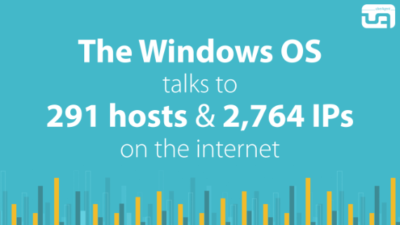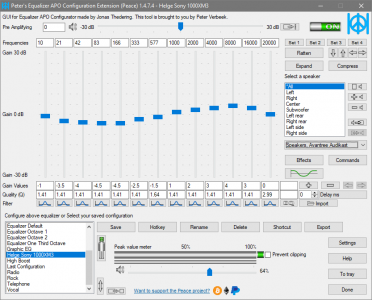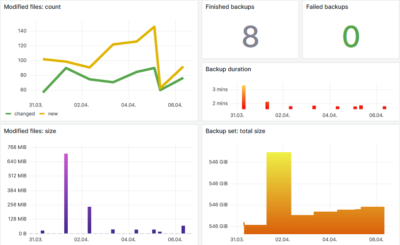Where is the App Store for Windows? Why Microsoft Should Fear Developer Drain.
Selling little apps for little money is next to impossible – on Windows. It works great on another platform, though: the iPhone. Such an imbalance has consequences: Apple making it easy for developers to actually sell their programs creates a pressure that might well cause a “developer drain” on the Windows platform.
It’s the Apps, Stupid!
The true value in a platform lies in the richness of its application ecosystem. Windows traditionally has been very strong here. If one application exists for a specific task, it is a Windows application. If two exist, chances are high that both are Windows applications. I think it is realistic to assume that Mac/Linux applications only emerge after at least two Windows counterparts exist (as always, the exception proves the rule).
There is much power in application availability. Why do people use Windows and not some other OS? Because it runs the software they want. Remember the home computer wars in the 80s? Different vendors competing with incompatible platforms. Who won? Those who ran the most programs.
People want software, not operating systems. They will use whatever OS makes it easiest for them to run the applications they need.
In other words, the value in a platform lies in the number and quality of the applications that are available for it.
Developers are like Mothers
Without mothers, a species dies. Without developers, an operating system is doomed. Again, Windows has been very strong here for a very long time. But that might change.
Developers need to earn a living, just like everybody else. In order to make money, they sell their applications. Nothing new here. But how does a developer decide which platform to target? Although not everyone will admit it, he or she will develop for the platform that promises the highest return on investment, or income. Traditionally this has been Windows because of the sheer number of potential buyers. But there is something fundamentally wrong in the Windows world: it is extremely difficult to turn potential buyers into actual buyers.
Ask yourself: How many little helper apps have you recently bought? Or even: how many programs of any kind have you recently bought? For almost everybody these numbers will be zero – on Windows. On the other hand, iPhone users regularly buy software. This mismatch may initiate a process that could ultimately sound the death knell for Windows: developers migrating from Windows to Apple because Apple makes it easier to earn money. Windows users do not buy software – Apple users do. The result is a developer drain for the Windows platform.
Stopping the Drain
People buy software in the app store because a) it is the only way to get software onto their devices, b) it is easy and c) because apps are inexpensive. Nobody has a problem paying 79 cents for an application. But 30 dollars? No way!
Windows applications are too expensive because they are too difficult to sell. The conversion rate from “potential buyer” to “buyer” is simply too low. That was no problem as long as nobody had a better way of selling software. But then Apple created the app store infrastructure for its iPhone and iPad devices and proved to the world that people do buy software if the process is painless and prices are right (meaning: low). Now Microsoft has a problem: Windows lacks the infrastructure Apple has.
I can only think of one way to remedy that: an app store for Windows. As unimaginative as that sounds, Microsoft, its customers and its developers would benefit in multiple ways. Because people might start actually buying software, the volume of the Windows software market would increase, luring more deveopers to the table. Since the total number of developers on this planet is finite, Microsoft’s competitors would lose developers. End users, on the other hand, would finally have a one stop shop where they could find, buy and install the programs they need without having to graze the internet.
In addition to all of the above, a Windows app store would allow automatic updating of any application. Windows has a bad reputation when it comes to security. But the vast majority of security holes are not in Windows, but in third-party applications that run on Windows. If users only were to update, patch and fix their software whenever a new version is released, the world would be a safer place… With an app store integrated into Microsoft Update that dream might become reality – and dispose of the myriad of updater services littering most Windows installations.
Theses
Here are some theses this article’s logic is built upon.
- Buying software must be easy.
- Software must be inexpensive or it will not be bought.
- The concept of “shareware” is antequated. If the price low enough, people will just buy the software.
- Windows users do not buy software because Windows programs are too expensive and buying is too complicated.
- iPhone users buy software because the process is quick and easy and apps are inexpensive.
- Developers switch to Apple because of the app store.
- A Windows app store would make software sales explode.
- With an app store, developers would earn more even though they would sell their programs at a fraction of the current price because of the higher number of sales.
- Windows would be a much safer platform if Microsoft would centralize application patching.
References
Jeff Atwood: The iPhone Software Revolution
Jeff Atwood: Software Pricing: Are We Doing It Wrong?









10 Comments
Interesting proposition really.
But, It assumes the cost of making windows-apps can compare to that on the apple platform. Is that ?
Hi Roforofo,
the costs of creating an app for Windows need not be the same as creating the same app for iPhone/iPad because a) the number of (potential) buyers is very different and b) the prices need not be exactly the same.
The reason people buy apps on the iphone is:
– its easy
– they have to take software from the store anyway
Iphone buyers and mac enthisiasts are different: they are happy slaves which are used to buy applications as long as the payed software just works and has a high usability. The freedom to install and to change everything on the system is not important to them.
Windows users in contrast are used to have the choice between severall alternatives, usually there is some opensource-software (or freeware) which does the job for free. So why bother to buy some tool which happens to fix one the severall shortcommings of the os (user interface, filemanager, browser, …) if there are equally or better apps for free.
Microsoft would not be allowed to behave like Apple does (install only software from our store and which we approve) for god reasons, no one would accept that. When was the last time some of the major media critizes that the iphone or ipad is bound to the app-store and the ipod is just useable via itunes? No one cares because the people are happy and the system is useable.
There is no central payment-infrastructure for applications on windows, which would make paying (customers) and getting the money (developpers) easy. And there won’t be, simply because Microsoft is not trusted by users and guidelines are ignored by devolopers (vista showed how much programmers cared about the ability to run their software as restricted user) unless they are forced on them (think of all the warnings about unsigned drivers you clicked in the past).
Same goes for central application patching for the same reason and Microsoft want companies to buy their whole software stack (and stick with it), they have no business interest in patching openoffice via windows update. All their interoperability-efforts try to make windows more attractive to work with, not to substitute the software they sell with compareable products.
The drain of developers will continue, Windows just can’t extend their market share anymore and the alternatives are getting stonger everyday. The development speed is faster and there is plenty of documentation around. In the past Netware were the leader, OS/2 wanted to be, today its Windows, tomorrow it will be Linux. The preinstalled OS is used, which one that is, the user don’t care as long as everything works and there is a neighbour or friend to ask for help
maybe there is some hope about the package-management-problem in Windows:
Some Windows-dev tries to programm one (named CoApp), if Microsoft is clever, they pay more people to solve their biggest (plattform security) problem:
german version:
http://www.heise.de/newsticker/meldung/Open-Source-Paketverwaltung-fuer-Windows-973968.html
english version:
http://www.h-online.com/open/news/item/Microsoft-s-CoApp-to-bring-package-management-to-Windows-973886.html
The fact you write this article is proof only that MS has done a poor job of promoting it’s version of the “App Store”…Windows Marketplace for Mobile:
http://www.microsoft.com/windowsmobile/en-us/meet/marketplace.mspx?CR_CC=100237324&WT.srch=1&WT.mc_id=Search&CR_SCC=100237324
You can rest assured that the release of Windows Phone 7 will better address this issue.
:-)
– anthonyx26
Yes and no – Microsoft has done a poor job of marketing its Marketplace for Mobile, but I am talking about an app store for Windows (Vista/7) in the article!
Well, then you need to compare apples to apples. Your article fails to mention that Apple also lacks an App Store for OSX. You only make mention of the iPhone App Store which is, of course, only for the iPhone, not OSX.
Would an App Store for Windows be great? Of course (and I believe Microsoft is already making plans to extend this to the existing Marketplace for Mobile).
– anthonyx26
“Now Microsoft has a problem: Windows lacks the infrastructure Apple has.”
Get your facts straight! If by “infrastructure”, you mean the iPhone App Store, Microsoft has the exact same infrastructure in its Marketplace for Mobile. It simply needs to be extended to the Windows environment.
– anthonyx26
Its an interesting standpoint; microsoft’s growth and dominance is in part because it made big efforts to make developing software for its environment easy
Apple’s app store is indeed an intuitive and simple model to follow. It isn’t alone tho’ – Android has its MArket – Microsoft has the same thing.
* Buying software must be easy. – these market places are easy to drive; provided you’ve submitted you details
* Software must be inexpensive or it will not be bought. < – nope. Console games are not inexepensive, they are bought in their droves. The app store does show that it is possible to make money from poor applications, and that you can make money by selling software cheaply. But that does not follow that unless software must be inexpensive
* The concept of “shareware” is antequated. If the price low enough, people will just buy the software. < again, no – no because its not unusual for a "lite" or ad version of an app to be published as a "teaser" to a higher priced application. I think its too early to call the death of try-before-you-buy as a model for software sales just yet
* Windows users do not buy software because Windows programs are too expensive and buying is too complicated. < I think Windows software sales is more complex because the market is more complex rather than the purchase process is too complex. Windows is not just an operating system it comes with a lot of stuff; many applications offer a choice – boxed product, license free product, self build, self install, alternative devices that you mightn't have had previously (consoles, hand held games, smartphones, phones).
* iPhone users buy software because the process is quick and easy and apps are inexpensive < iphone users have to buy apps, otherwise its just a damned expensive phone with a slightly rubbish browser, a poor camera and a premature alarm. The process had to be easy and relatively inexpensive (per transaction) otherwise the iphone as a phone wouldn't have taken off. Also – bear in mind that 20-30 apps are going to set you back £20-£30: its not inexpensive over time.
* Developers switch to Apple because of the app store. < I think some developers will switch; goodm, successful developers will work across platforms. You programmed apps for Windows because lots of devices ran Windows therefore a big market. If you just program for Apple – what about Android, Blackberry and Windows which is still a huge installation base?
* A Windows app store would make software sales explode. < didn't work for Palm – and it would require a very different installation method for applications, and wouldn't
* With an app store, developers would earn more even though they would sell their programs at a fraction of the current price because of the higher number of sales. < If you sold a program for £20 on-line via share ware using google/amazon to promote your product how would an application store be so much different and generate more users?
* Windows would be a much safer platform if Microsoft would centralize application patching. < can't argue with that :)
I think the rise of alternative devices is a good thing for software developers. It exposes new markets, new ideas, new requirements that perhaps was becoming stale with the standardised platform that Windows gave, and the increasingly homogenised default consumer windows was not helping. It would be great if (for consumers) the structure of buying, or renting applications was more straightforward: I believe there are options for this now – but I'm not sure of the need for applications on PCs/laptops works in the same way than it does for smartphones.
I don't think MS will fear the dev drain – for a number of reasons but also "delivering apps to run locally on PCs" is where they want to be at.
Great comments, Andy, thanks for sharing your thoughts!